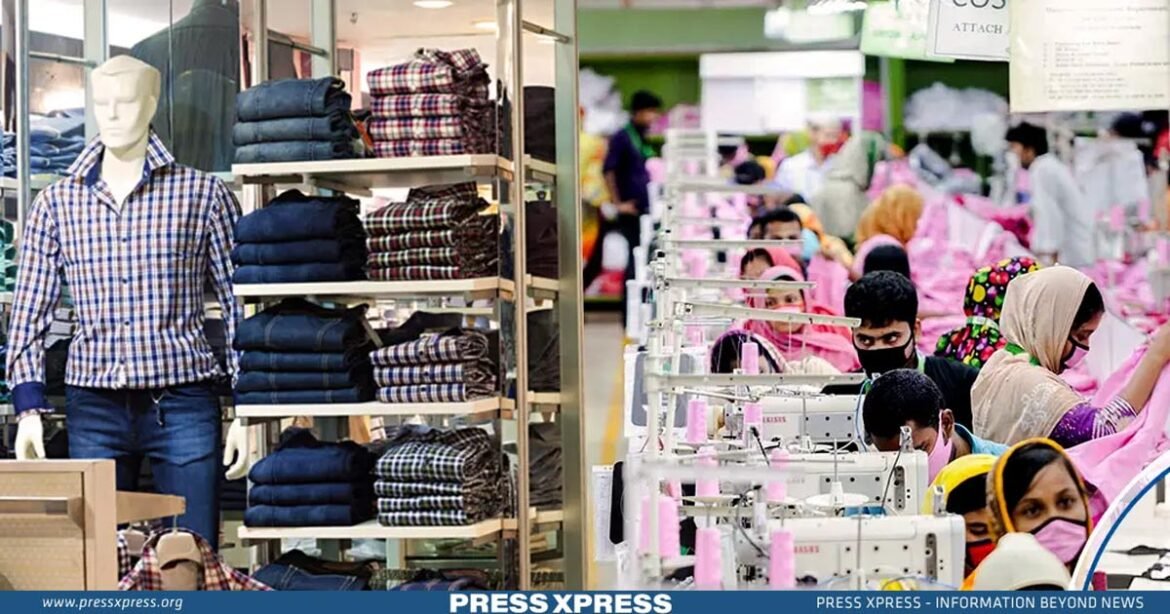Addressing the challenges and implementing the recommendations could help Bangladesh capitalize on the growth opportunities in the global market for non-cotton garments
A study by the Economic Relations Division (ERD) suggests that Bangladesh’s exports of non-cotton garments, including man-made fibers, could potentially double to $19 billion by 2025 from the current $8.5 billion if existing challenges are addressed. The study, conducted in collaboration with the Research and Policy Integration for Development (RAPID), focuses on 20 types of non-cotton apparel items. It highlights the need for a fiber security strategy, duty-free access to all fibers, and the establishment of a low-cost investment fund along with skill development to support investments in man-made fibers.
“The demand for man-made fibers is growing faster than cotton in the global market. Bangladesh’s position in this market is still relatively low. There is a great potential for Bangladesh in this sector, and it can be achieved by addressing existing challenges,”
– Dr Mohammad Abdur Razzaque, Chairman, RAPID

The study report, titled “Expanding Man-Made Fiber (MMF) Apparel Export: A Strategy for Upscaling the Garment Sector,” was presented to stakeholders in Dhaka on January 31, 2024. Stakeholders, including entrepreneurs, acknowledge the potential outlined in the study and emphasize the importance of policy support to exploit opportunities in the global market for man-made fibers.
Non-Cotton Wardrobe Options
Non-cotton garments of Bangladesh include:
- Waistcoats
- T-shirts
- Wind jackets
- Brassieres
- Non-woven garments
- Trousers
- Synthetic dresses
- Shirts
- Overcoats
- Tracksuits
- Full or knee-length hosiery and socks
- Rubberized garments for women
- Non-knitted synthetic dress, etc.

Bangladesh’s Export: Non-Cotton Growth
The export of apparel crafted from non-cotton fabrics, such as man-made fibers (MMF), is experiencing rapid growth in Bangladesh, positioning the country as the second-largest supplier to the European market, according to government findings. In 2022, Bangladesh’s ready-made garment (RMG) export share from MMF, wool, silk-based fibers, and blended products surged to 29.2 percent of its total export volume, as per the study.
As per the Export Promotion Bureau (EPB), apparel made of materials other than cotton comprised 29% of the nation’s $55.56 billion in export revenue for the fiscal year 2023, and non-cotton clothing made up 54% of the $505 billion global apparel market in 2021.Despite this, 70.8 percent of the country’s total exportable apparel products still rely on cotton as the primary raw material, predominantly imported.

Just behind China, Bangladesh ranks second as the largest supplier of non-cotton products to the European market and third in the US market, according to research from the Economic Relations Division (ERD).
The ERD’s study, conducted under the Support to Sustainable Graduation Project (SSGP), outlines Bangladesh’s market access, comparative advantage, and strategies for export diversification in the RMG sector, particularly in the pre-and post-LDC graduation era.
Among major markets, Bangladesh holds nearly 8.0 percent share of MMF and blend product-based apparel in the EU market and about 5.0 percent in the USA, according to the ERD report. China leads as the largest non-cotton RMG supplier to both the EU and US markets, with shares of nearly 27 percent and 30 percent, respectively.
Competitors like Turkey and Vietnam, with shares of 5.0 percent and 3.0 percent in the EU market, and Vietnam with a significant 20 percent share in the US market, pose challenges to Bangladesh’s market position. The primary source for MMF production inputs is the recycling of PET (Polyethylene Terephthalate) bottles, particularly the scraps and flakes derived from these bottles.
Globally, non-cotton apparel products dominate the market with a share of 57.5 percent, driven by consumer preferences in the USA and European nations favoring such clothing over cotton-based attire.
Despite Bangladesh’s progress, its share in the global non-cotton apparel market remains low at 29.2 percent, with MMF garments comprising 21.8 percent, blended apparel at 7.0 percent, and only 0.3 percent from silk and wool apparel, as per the ERD study.
Non-Cotton Export Challenges
Duty-Free Dilemma: A dearth of duty-free raw materials, customs clearance delays, and convoluted duty-drawback procedures as primary obstacles hindering the exploration of non-cotton garment exports’ potential.
Finance Frustrations: Inadequate short-term financing support, coupled with a lack of FDI inflow and the absence of a fiber security strategy, emerge as significant challenges demanding attention for the expansion of non-cotton garment exports.
Technology Tangle: A conspicuous absence of modern technology adoption exacerbates the hurdles, along with a notable skills gap in top and mid-level managerial roles.
Workforce Woes: The impediments posed by a scarcity of skilled workers, limited research and development initiatives, and the low prevalence of compliance and certification practices.
Import Hurdles: Although cotton and cotton textiles enjoy duty-free status, the imposition of import duties, reaching up to 59% for man-made fiber raw materials, adds strain. Moreover, the complexity and additional costs associated with duty refunds upon export further dissuade businesses.
Recommendations to Boost Export of Non-Cotton Garments
- Advocate for duty-free access to all non-cotton fibers to reduce financial barriers and encourage export growth.
- Establish a comprehensive fiber security strategy to ensure a stable supply of raw materials for non-cotton garment production.
- Establish a low-cost investment fund to support businesses in investing in man-made fibers, fostering growth in the sector.
- Prioritize skill development initiatives to equip the workforce with the necessary expertise in handling non-cotton garment production, from manufacturing to managerial roles.
- Encourage the adoption of modern technology in production processes to improve efficiency and competitiveness in the global market.
- Simplify customs clearance procedures and duty-drawback processes to reduce delays and operational costs for exporters.
- Provide adequate short-term financing support and attract foreign direct investment (FDI) to alleviate financial constraints hindering export expansion.
- Encourage research and development initiatives to drive innovation in non-cotton garment production and enhance product quality and variety.
- Promote compliance and certification practices to meet international standards and build trust with global buyers.
- Advocate for trade facilitation measures to reduce import duties on raw materials for non-cotton garment production, making exports more competitive in the global market.
In conclusion, the study conducted by the Economic Relations Division (ERD) in collaboration with RAPID emphasizes Bangladesh’s potential to significantly expand its exports of non-cotton garments, particularly man-made fibers. Addressing existing challenges through policy support, investment in infrastructure, skill development, and technology adoption is imperative to capitalize on this growth opportunity and elevate Bangladesh’s position in the global market.


